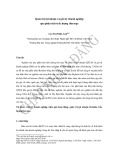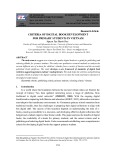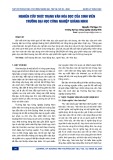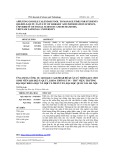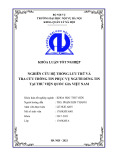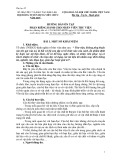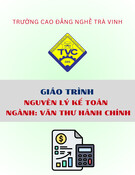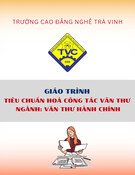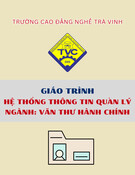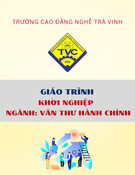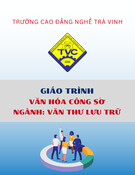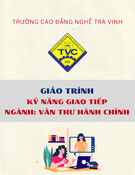
Journal of Humanities, Arts and Social Science, 2024, 8(4), 976-980
https://www. hillpublisher. com/journals/jhass/
ISSN Online: 2576-0548
ISSN Print: 2576-0556
DOI: 10.26855/jhass.2024.04.028
976
Journal of Humanities, Arts and Social Science
Research on Interactive Exhibition Design in Art
Museums Based on Audience Participation
Jiaxin Wang
Taipei National University of the Arts, Taipei, Taiwan.
How to cite this paper: Jiaxin Wang.
(2024) Research on Interactive Exhibition
Design in Art Museums Based on Audience
Participation. Journal of Humanities, Arts
and Social Science, 8(4), 976-980.
DOI: 10.26855/jhass.2024.04.028
Received: March 31, 2024
Accepted: April 30, 2024
Published: May 29, 2024
*Corresponding author: Jiaxin Wang,
Taipei National University of the Arts,
Taipei, Taiwan.
Abstract
The ultimate goal of art communication is to foster public acceptance of art culture.
Art galleries play a crucial role in this communication process by catering to and
promoting the diverse needs of audiences. With the advancement of digital tech-
nology, museums have more possibilities for exhibit display and collection man-
agement. The traditional functions of museums have evolved, raising questions
about how digital displays can be planned and presented to enhance learning among
visitors. What factors should be considered in the interaction design of digital de-
vices within exhibition venues? This shift in presentation style has transformed mu-
seums from merely displaying collections to potentially being standalone pieces of
art themselves. Compared to static cultural commemorative exhibitions, digital in-
teraction stimulates visitors' senses in various ways. Art museums benefit from en-
hanced lighting, sound, identification, and tactile experiences, which offer addi-
tional avenues for acquiring information. This paper, based on "museology" theo-
ries, discusses user participation and design in interactive art museum exhibits, an-
alyzing the significance of interactive installations in art exhibitions and the future
direction of art exhibitions.
Keywords
Art Museums, Interactive Exhibitions, User Experience, Design Framework
Since the 21st century's advent of "New Museology" (Vergo, Peter, ed., 1989), the function of museums as cultural
institutions has been reevaluated. "The New Museology" presents various topics around museum history, theory, and
practice. These essays represent a significant shift from focusing on museum methods to examining the purpose,
social responsibility, and visitor experience quality in museums. In this discourse, art museums are often seen as the
least accessible in terms of cultural democracy. The failure of art museums to attract broader audiences remains
underexamined and has not widely catalyzed changes in professional practice in curation, education, or public pro-
grams. Thus, digital exhibitions might offer more possibilities to attract a wider audience.
Compared with traditional cultural memorial exhibitions, digital interactive uses advanced technologies such as
rich lighting effects, surround sound, image recognition, and touch screens to provide a new type of visitor experience
that breaks the shackles of traditional exhibitions and enables audiences to interact with art in an immersive environ-
ment, greatly increasing participation and interactivity. For art galleries, the use of such technology can appeal to a
wider audience, especially the tech-driven younger generation, who tend to seek more dynamic and interactive expe-
riences.
1. "Display" and "Viewing" in Art Museums
Moreover, digital displays have made exhibitions less dependent on the quality of the collections. Modern display
concepts have shifted to engaging installations that may or may not include physical objects. For example, the 2023

Jiaxin Wang
DOI: 10.26855/jhass.2024.04.028
977
Journal of Humanities, Arts and Social Science
Shanghai Expo Museum's "Van Gogh Reimagined" immersive light show, used large screens to recreate Van Gogh's
classic works. These installations not only fascinated Van Gogh enthusiasts but also made his paintings more acces-
sible to those less familiar with his work.
Traditionally, museums have been seen as places to collect and display physical exhibits, with their value and
definition often directly related to their physical collections. Modern museums focus not just on collecting and dis-
playing objects but on providing rich visitor experiences and interactivity. With the evolution of technology, partic-
ularly the introduction of digital interactive technology, museums have undergone significant changes in display
methods and visitor engagement strategies. Museum education scholar Eilean Hooper-Greenhill suggests that muse-
ums are not just places for collecting and displaying relics but complex communication spaces where artifacts are
imbued with new meanings and conveyed to the audience in various ways. Thus, how museums use displays and
interpret visual culture to educate and attract the public is crucial.
Hooper-Greenhill emphasizes that visuals are not just about identifying objects but can be effective communication
tools that tell stories, convey information, and trigger emotional responses. Bourdieu points out that cultural capital
is transmitted and reproduced within specific social classes and knowledge boundaries, and digital interactive instal-
lations in art exhibitions allow artworks to interact with the audience beyond just "viewing the original".
Interactive Exhibitions in Art Museums: Interactive exhibitions in art museums employ interactive design and
technological means to actively engage viewers with the artworks. Unlike traditional museum exhibitions where
viewers passively observe art, these interactive exhibitions integrate virtual reality, augmented reality, gesture recog-
nition, and touchscreen technologies, offering visitors a more immersive exhibition experience. Several forms and
technologies are adopted to meet the audience's participation needs and the thematic requirements of the exhibition.
Virtual reality technology creates virtual art spaces, allowing visitors to explore artworks in an immersive manner.
Gesture recognition and touch screen technologies enable viewers to interact with artworks through gestures and
touch. Augmented reality technology overlays virtual elements onto the real environment, providing rich visual ef-
fects. Combining Nina Simon's theory of the "Participatory Museum," audience participation in art exhibitions can
be enhanced in five aspects to improve exhibition interaction:
a) Immersive and Interactive Experience: By using touch screens, augmented reality (AR), and virtual reality (VR)
technologies, visitors can interact directly with the artwork, providing an immersive experience. Design immersive
elements of touch, sound, and vision to inspire the viewer's sensory experience. The application of these technologies
makes the audience experience more personalized and engaging.
b) Participatory Creation: In digital interactive exhibitions, viewers' actions or choices can directly influence how
the artworks are presented, making them part of the creative process. Such design ensures that each visitor's experi-
ence is unique.
c) Enhanced Social Interaction: Digital interactive art exhibitions also encourage social interaction among visitors,
such as through multi-person interactive segments that foster sharing and discussion, helping to build connections
and dialogue within the community.
d) New Ways of Education and Learning: These exhibitions provide new learning methods for visitors, allowing
them to gain a deeper understanding of the background and creative process of artworks through interactive experi-
ences, making the learning process more vivid and interesting.
e) Opportunities for Cultural Participation: In line with the concept of participatory museums, digital interactive
art exhibitions can be designed to allow visitors to contribute their content or stories, making them active participants
in cultural creation and dissemination.
2. Design Strategies for Interactive Exhibitions in Art Museums
Participatory exhibition design shapes an engaging learning environment in museums, stimulating public interest in
art, history, and culture. Compared to traditional exhibitions, interactive exhibits can better provide customized con-
tent based on audience behavior and preferences, creating a more personalized museum visiting experience. Addi-
tionally, these technologies help viewers better understand the contents of the exhibition by presenting information
in a vivid and engaging way, using mobile apps or audio-guided devices to provide a deeper interpretation of the
artwork and the story behind it, helping visitors better understand the cultural and historical context of the exhibits.
Interactive exhibitions in art museums introduce innovative display methods, combining interactive design and tech-
nology to offer richer, more captivating experiences to visitors.

Jiaxin Wang
DOI: 10.26855/jhass.2024.04.028
978
Journal of Humanities, Arts and Social Science
Figure 1. 'Van Gogh Alive'—Light and Shadow Area & Installation Art: Sunflower Mirror Room".
Enhancing Sensory Experiences for Visitors: Display differs from mere presentation. Presentation implies passiv-
ity, where the audience defines the meaning of the display. For example, the Qinghua porcelain exhibition at the
Forbidden City displayed various pieces chronologically. The meaning beyond this arrangement is left for the audi-
ence to discern. Traditional displays fail to showcase the evolving value of these items. Digital displays, however,
allow visitors to zoom into specific parts of a painting like Van Gogh’s strokes, even down to the layers of color,
offering a deeper visual experience than the naked eye. The high contrast and resolution of screens in digital displays
can enhance the color saturation and contrast of "Starry Night," allowing audiences to feel the dynamism of Van
Gogh's colors (Vergo Peter, 1989).
Audience participation is enhanced in several ways: (1) Touch Interaction: Digital displays with touch screen tech-
nology allow visitors to explore various aspects of a painting, such as its background story or the artist’s biography.
(2) Dynamic Interpretation: Animations or video narrations assist in understanding each element's symbolic meaning
in the artwork, like the dynamic demonstration of Van Gogh's swirling star nebulae, enhancing comprehension of the
painting’s dynamic beauty. (3) Enhanced Auditory Experience: Environmental sound effects, like night insects or
wind, provide an immersive auditory backdrop, recreating the environment depicted in the artwork. Synchronized
audio narrations guide visitors to understand the history and artistic value of the painting, catering to multilingual
needs. (4) Deepening Emotional Resonance: Digital displays can design various visual and sound scenes to guide
viewers into the artist's emotional state during creation, increasing emotional resonance with the audience.
In summary, digital display technologies not only provide richer information and background knowledge but also
activate sensory experiences in new ways, especially in visual and auditory aspects. These technologies rejuvenate
classic artworks like "Starry Night," offering a novel, interactive appreciation method. The 2021 Forbidden City and
Tencent co-hosted exhibition " ‘Wen’ to Convey the Way—Forbidden City Tencent Immersive Digital Experience
Exhibition" in Shenzhen displayed static artifacts like the Four Seasons Landscape Transforming Neck Bottle and
Polychrome Fish and Algae Pattern Lidded Jar in dynamic forms through digital technology. Huge screens used for
3D digital displays revealed more details, immersing visitors in the patterns. This digital recreation allowed visitors
to explore according to their interests, but the exhibitor's intent still guided the understanding. The enrichment of
visual and control aspects enhances the sensory dimensions of the exhibition (Simon & Nina, 2010).
3. Interactive Design and Reflection in Art Exhibitions
Constructivism posits that learning is an active, constructive, experience-based process influenced by individual cog-
nitive frameworks and motivations. Therefore, presenting artworks through digital interaction offers a richer and
more diverse experience, enhancing the depth and retention of learning while accommodating the needs of different
audiences (Berger & John, 1972). This approach can deepen personal understanding of artworks, evoke emotional

Jiaxin Wang
DOI: 10.26855/jhass.2024.04.028
979
Journal of Humanities, Arts and Social Science
responses, and may inspire visitors to continue exploring and learning after their museum experience. In summary,
in the design of interactive installations in art museums, it's crucial to focus on simplifying the user interaction work-
flow as a key strategy to enhance user experience. A clean, intuitive interactive interface can reduce the learning and
operation costs for users, making it easier for them to engage with interactive elements. Well-organized layouts and
visual cues enable users to quickly understand the interface's functionality and operation. Moreover, providing clear
instructions and feedback is vital to streamline the workflow. Clear guidance and timely feedback can ensure accurate
interaction and enhance visitors' engagement and adaptability (Baxandall & Michael, 1984).
Secondly, in contemporary art exhibitions, the construction of dialogue context is not only to present the space and
exhibits but also to take into account the participation and feedback of the audience, forming a dynamic two-way
communication. In it, situational dialogue is cleverly introduced as a mode of interaction designed to simulate real
conversation scenes and create opportunities for visitors to interact directly with virtual characters or artists. Through
situational dialogue, visitors are able to share their unique views on the artwork, ask questions, and even participate
in the process of artistic creation. The core goal of this design strategy is to break down the traditional barrier between
visitors and artworks and to stimulate the audience's emotional engagement and immersion, so that they are no longer
passive viewers, but active participants in the exhibition. This interactive approach not only provides the audience
with a deeper understanding and perception of the art, but also injects a richer layer and dynamic into the exhibition.
The views and questions of the audience become part of the exhibition, adding life and vitality to the entire art space.
The exhibition is no longer a static place of display, but a social space filled with dialogue and resonance.
In this way, the exhibition is not only more attractive, but also becomes a real cultural exchange platform. A closer
connection between the audience and the artwork has been established, making art no longer limited to the work
itself, but a carrier of interaction and resonance with people. Such a design not only enhances the value of the exhi-
bition but also brings a richer and deeper artistic experience to the audience (Lu Runcai & Li Xiaohong, 2023).
Besides interactive design, content design in exhibitions is also key to attracting visitor participation. The content
design of the exhibition needs to consider how to center the audience and stimulate their thinking and perception.
Through meticulous planning and multimedia displays, using multimedia interactive devices, virtual reality, and other
technologies, exhibitions can present innovative and captivating content, stimulating visitors' interest and involve-
ment. Utilizing multimedia technologies like videos, audio, and projections, exhibitions can offer more diverse
presentations, allowing visitors to engage with multiple senses. This design is not just to inform, but to create a
resonant and immersive experience that enables the audience to gain a deeper understanding of the art in their partic-
ipation. Emphasizing the narrative of content and the nature of interaction, engaging narratives and guided display
methods enable visitors to delve deeper into the stories behind the artworks and the artists' intentions, stimulating
their thinking and imagination (Fang Wei & Gong Xuan, 2023).
4. Conclusion
Audiences are no longer passive viewers but actively engage and interact with artworks. This article aims to explore
the concept, forms, and characteristics of interactive exhibitions in art museums, as well as the significance of user
experience. Additionally, it provides a design framework and strategies to assist museum designers and curators in
effectively utilizing interactive design elements and principles in exhibition design, enhancing audience participation
and the overall appeal of exhibitions. Interactive exhibitions in art museums offer visitors participatory and person-
alized experiences by integrating interactive design and technological elements. Effective user experience design and
innovative exhibition strategies are key to the success of interactive exhibitions. Enhancing tactile experiences, sim-
plifying user workflows, emphasizing contextual dialogue, and highlighting content design can increase visitor en-
gagement and satisfaction, creating a rich and immersive exhibition experience. In interactive exhibitions, the fusion
of technology and art provides a unique platform for visitors to explore, interact, and deeply engage in the artistic
process. By allowing visitors to touch and feel the texture of artworks, simplifying interactive interfaces, facilitating
dialogues with virtual characters or artists, and showcasing captivating content, interactive exhibitions bridge the gap
between the audience and artworks, promoting a deeper understanding and appreciation of art. The design framework
outlined in this article offers a roadmap for creating interactive exhibitions in art museums. By considering themes,
target audiences, interactive elements, user experience flows, and immersive environments, art museums can trans-
form traditional exhibitions into dynamic and interactive experiences. This not only attracts a wider audience but also
enriches their artistic journey, fostering a sense of connection and dialogue between the audience and the artworks.
In summary, interactive exhibitions in art museums provide a new paradigm for art engagement.

Jiaxin Wang
DOI: 10.26855/jhass.2024.04.028
980
Journal of Humanities, Arts and Social Science
References
Baxandall, Michael. Painting and Experience in Fifteenth-Century Italy. Oxford University Press, 1988.
Berger, John. Ways of Seeing. Penguin Books, 1972.
Bourdieu, Pierre. Distinction: A Social Critique of the Judgement of Taste. Harvard University Press, 1984.
Exhibition Information and Image Source for 'Van Gogh Alive': Shanghai World Expo Museum Online Exhibition Mate-
rials. http://expo-museum.cn/sbbwg/n281/n282/n330/n331/u1ai27835.html.
Fang Wei, Gong Xuan. Research on Interactive Exhibition Design of Art Museums Based on User Experience [J]. Pack-
aging and Design, 2023, (01): 116-117.
Hooper-Greenhill, Eilean. Museums and the Interpretation of Visual Culture. Routledge, 2000.
Lu Runcai, Li Xiaohong. Analysis of Digital Interactive Design for Museum Exhibitions [J]. China Museum, 2023, (02):
96-99.
Meng Yu. Analysis of the Application of Interactive Design in Domestic Museum Exhibitions [J]. Daqing Social Sciences,
2023, (02): 114-117.
Simon, Nina. The Participatory Museum. Museum 2.0, 2010.
Vergo, Peter, ed. The New Museology. Reaktion Books, 1989, London.





